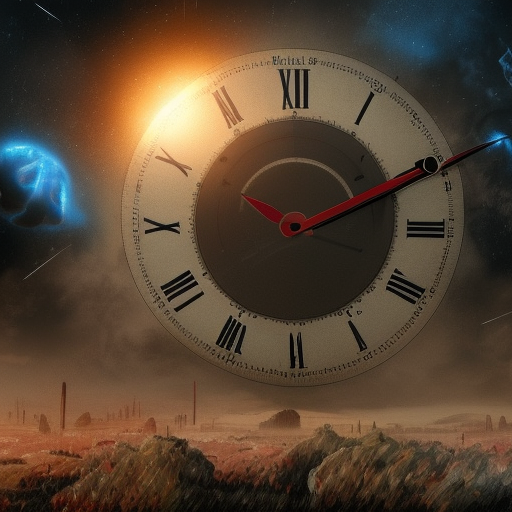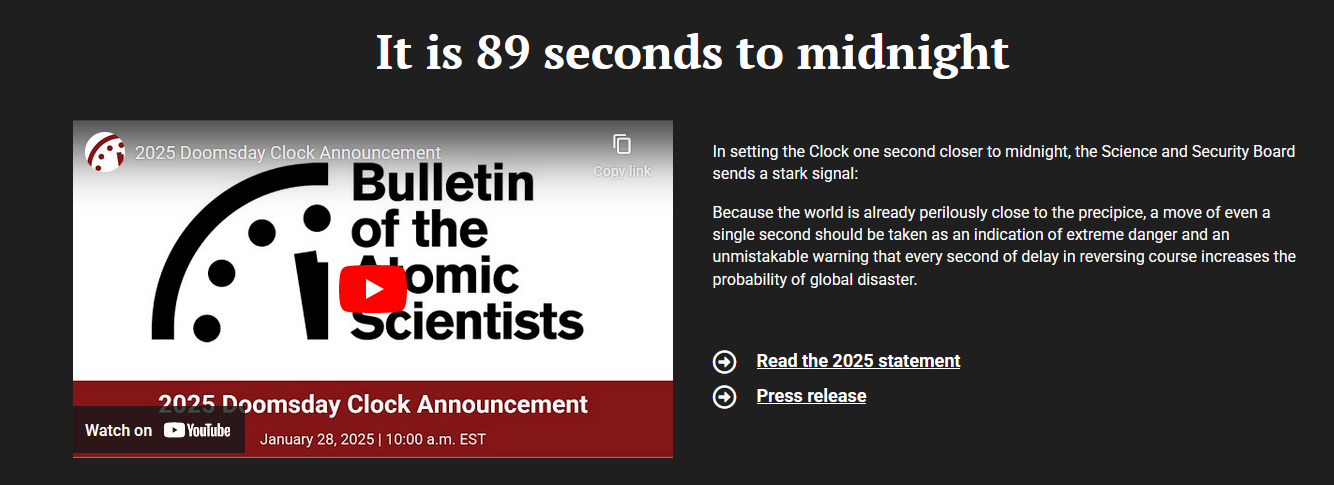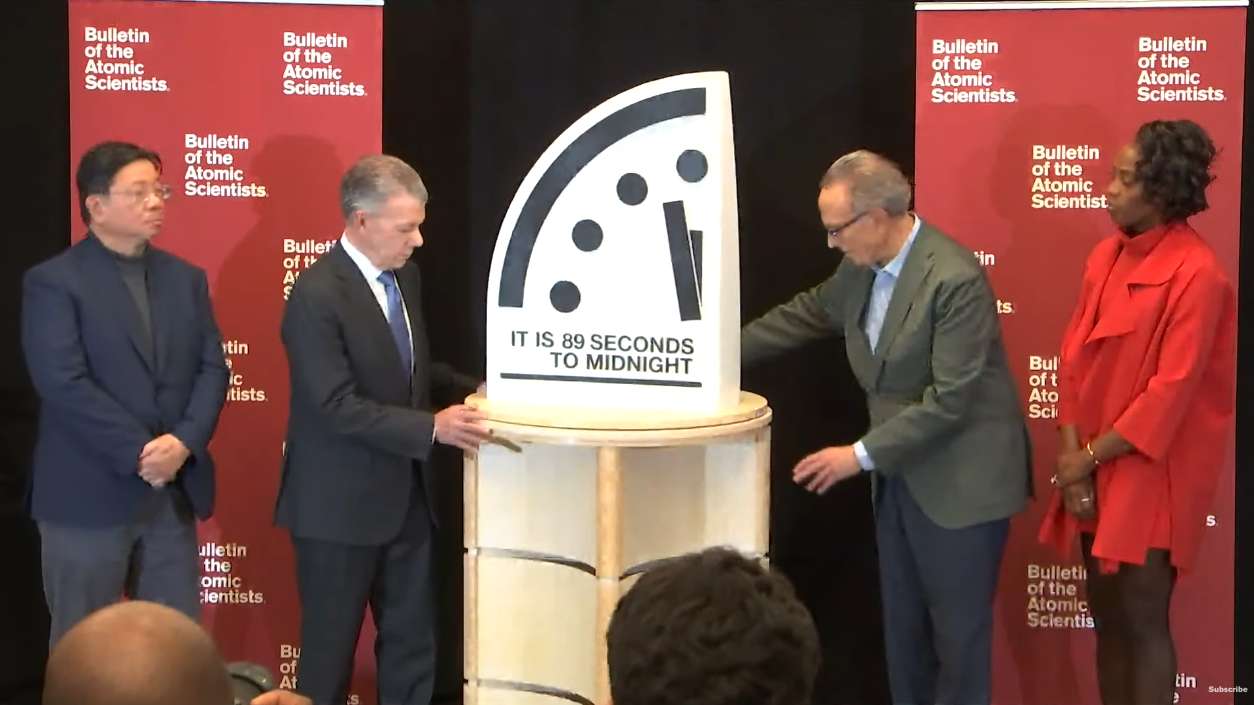
Resolves "Yes" if the Bulletin of the Atomic Scientists' Doomsday Clock at https://thebulletin.org/doomsday-clock/ is set closer to midnight by the end of January 2025 than the end of January 2024.

Criteria clarification:
-If the clock is at the exact same time as 2024 (90 seconds) this resolves NO.
-If the bulletin doesn't release a statement on the clock's new time by the end of February (PST) then this market will resolve to 50%.
@VonGadke Mods can only resolve if the markets creator doesn’t resolve within a day of a ping, I can do it in 22 hours but I think @MartinRandall will get to it before
I divested because I no longer believe they will move the clock, but have to note that the closing day is set while there is still a week and a half remaining of january @MartinRandall
First, let's take a look at who's going to be setting the clock: mostly Democrat-leaning Americans.
The last advance came in 2023, inspired by Russia's invasion of Ukraine in 2022. Nominally, there are four domains under consideration: Nuclear Risk, Climate Change, Biological Threats and Disruptive Technologies. Ukraine somehow became both a Climate Change issue ("The geopolitical fissure opened by the invasion of Ukraine has weakened the global will to cooperate while undermining confidence in the durability, or even the feasibility, of broad-based multilateral collaboration") and a Disruptive Technology issue (via disinformation and drones). COVID-19 mostly got Biological Threats to itself but there was of course the possibility that Russia could use biological weapons in Ukraine.
As a Manifold user, you're probably thinking that recent advances in AI warrant a few Disruptive Technology ticks, but remember who's making the decision. Advances in 2023 weren't enough to move the clock in 2024.
But something salient to the setters has occurred: Trump's re-election. Trump's behavior features significantly in the writeups for the 2017, 2018 and 2020 advances, so it seems reasonable that they'll register another protest this year and maybe say something about AI while they do it. 73% sounds about right.
And here's a market to watch for arbs (the time is currently 90 seconds to midnight): https://manifold.markets/AAP/doomsday-clock-set-at-less-than-90
@MartinRandall so this clock can either change (resolved as yes) and don't change. is it necessary to add this 3rd scenario, where it does not change, and it is resolved at 50% ? whats the point in offering a yes/no question, when there are three possible outcomes?
@3d yes/no markets are simpler. You're welcome to create another market that better captures what you care about.

